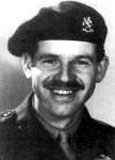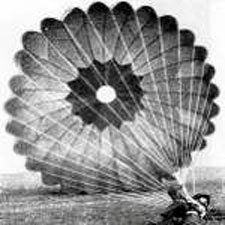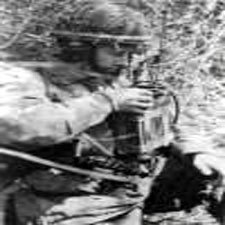 holocaust, jewish, extermination, concentration camp, shoah, auschwitz, belzec, treblinka, monowitz, birkenau, night of the long knives,
holocaust, jewish, extermination, concentration camp, shoah, auschwitz, belzec, treblinka, monowitz, birkenau, night of the long knives,
deportations, judenrat, majdanek, westerbork, chelmno, vught, wannsee, theresienstadt, roma, sinti, night of the broken glass, extermination camps, nazi´s,
hitler, jews, diaspora, jewish council, judenrat, transportation, birkenau, ghetto, hans vanderwerff, sion soeters, aktion reinhard, terezin, himmler, david irving
holocaust denial, holocaust lest we forget, jews, synagogue, oswald pohl, odilo globocnik, deportations, judenrat, majdanek, westerbork, chelmno, vught,
wannsee, theresienstadt, roma, sinti, night of the broken glass, extermination camps, nazi´s, hitler, jews, diaspora, jewish council, judenrat, transportation,
birkenau, ghetto, hans vanderwerff, sion soeters, aktion reinhard, terezin, himmler, david irving, holocaust denial, holocaust lest we forget, jews, synagogue,
oswald pohl, siegfried seidl, protectorate, bohemia, moravia, murmelstein, karl rahm, anton burger, karl hermann frank,
|
| |
|
Westerbork Liberation - Arie Bestebreurtje |
|

|
|
Arie Bestebreurtje (photo courtesy John Beach) |
Wilhelmina, Queen of the Netherlands, had requested of the Allied forces command that they should make an effort to spare the dykes and drainage systems. Thus Calvert, commander of the SAS, proposed that French paratroopers be used to precede the advancing Canadians troops to Groningen. Operation Amherst began with the drop of 702 Special Air Service paratroopers of the 3rd and 4th French SAS (Special Air Services) during the night from 7 to 8 April, 1945. The teams were meant to spread out and capture and protect key facilities from the Germans. In this they succeeded in part. Advancing Canadian troops quickly relieved the isolated French SAS. 8 Stirlings of the No. 570 Squadron brought the paratroopers to the provinces of Drente and eastern Friesland. Included in this operation were a number of Dutch and British paratroopers, Major Harcourt, captain Arie Bestebreurtje, captain C. Ruysch van Dugteren and Radio Operator sergeant Somers. They were dropped under the code name Team Dicing in the the province of Drente and landed in the vicinity of camp Westerbork. Their objective was to offer support to the Dutch underground and assist them in their covert operations.
Operation Amherst was considered to be of the utmost importance to the liberation of the northern provinces. Its goal was to capture several bridges and other strategic objects from the Germans. All this in support of the approaching tanks and carriers of the 2nd Canadian Division so that the rest of the Canadian and Polish army units could continue and push through to deep into the province of Groningen. To the east of the province of Groningen were the all-important German harbor cities which could than be used for the Allied supply ships. The liberation of camp Westerbork certainly was an important part of that plan.
|

|

|
|
Paratrooper down
Photo Souvenir SAS |
Radio Operator in action
Photo Souvenir SAS |
As mentioned earlier, Bestebreurtje was dropped together with Harcourt, Ruysch van Dugteren and Sommers in the vicinity of camp Westerbork in the night of 7 to 8 April. The drop was not very successful. Awkward coordination, poor weather conditions and inexperience of the dispatcher made the landing rather unsuccessful. Major Harcourt was captured by the Germans on the 9th of April, one day after the landing. Captain Ruysch van Dugteren and Sgt. Sommers failed to make contact with either Harcourt or Bestebreurtje and independently linked up with the Dutch underground. Besides Harcourt several other paratroopers of other teams were captured as well while a few were sheltered by Aad van As within camp Westerbork until the camp was liberated. Bestebreurtje made an unfortunate landing and either broke or badly sprained his right ankle. The result was that he could not walk any more. It is nothing but the miraculous that he was not discovered by the Germans since he landed close to the camp perimeters. Because of the injuries he sustained in the landing he could not go on any further. Regardless the pain he managed to stay in hiding during the day while at night he crawled bit by bit in the direction of the village of Hooghalen. On the forth day he was found by farmer Jan Schutten and his son and was brought by horse and cart to the farmhouse where he was hidden until after liberation. Bestebreurtje had suffered five long days of hunger and thirst while his leg was throbbing with pain. Perseverance and training had helped him to get through the long days.
The goal for Bestebreurtje and the other three men of team Dicing had been to play an active role in assisting the Dutch underground in the final stages of the war in the Netherlands. Because of regrettable circumstances this goal unfortunately was not achieved, with the exception of Capt. Carel Ruijs van Dugteren. Still, the story of this highly decorated Dutch war hero, who had played such a masterful role around Arnhem in operation Market Garden in the fall of 1944, needed to be told.

|
 |
|

Nederlands |
 holocaust, jewish, extermination, concentration camp, shoah, auschwitz, belzec, treblinka, monowitz, birkenau, night of the long knives,
holocaust, jewish, extermination, concentration camp, shoah, auschwitz, belzec, treblinka, monowitz, birkenau, night of the long knives, 


